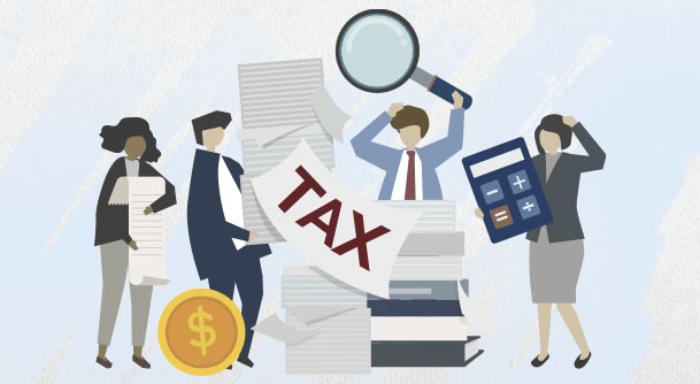Understanding Intimation Under Section 143(1)
Blog Title
1334 |
3/3/25 8:30 AM |
It can be scary to receive an intimation from the Income Tax Department, particularly if you don't know what it means or what to do next. The notification provided through Section 143(1) of the Income Tax Act is one of the most common notices. This notice usually comes after the authorities have assessed your tax benefit eligibility.
If you’re concerned about how you should react to this notice, then here’s a detailed breakdown of Section 143(1) of the Income Tax Act.
Types of Intimations Under Section 143(1)
Depending on the tax department's findings, an intimation can be of different categories under Section 143(1). The types of notices are:
No Differences: The best-case scenario is that the notification will only let you know that your return was handled correctly and that there are no problems with your returns.
Arithmetic Errors: The notification will highlight any calculation errors, such as a misspelling or an inaccurate amount. If you underreport your income or deductions, you may be required to pay more taxes.
Income or Claim Discrepancies: The department will request clarification if they discover differences between the income you provided and their records. Deductions, exemptions, or income disparities may be involved in it.
Refund or Demand: The notification may occasionally remind you that you owe taxes or are eligible for a refund. The notification will state the amount and how to manage it.
What Should You Do Upon Receiving Intimation Under Section 143(1)?
If you have received an intimation, you don't need to panic. Here’s what you need to do:
Carefully Read It: Take a deep breath and read the notification carefully. It will explain the department's findings and let you know if you need to take any action.
Check for Errors: Verify the information in the notification against the specifics of your first return to look for any errors. If the department points out errors in your return, verify whether they are accurate or if a mistake was made. You may also verify your numbers again to check for a minor error.
Verify Your Tax Calculations: The calculations in the notification should be reviewed if you have been requested to pay more taxes. Spend some time going over the calculations if you think they're wrong.
Take Professional Help if Necessary: It's always a good idea to speak with a tax expert if the notification is unclear. They can assist you in better understanding it and making further decisions.
Timeline and Penalty Implications
It's very important to take immediate action after receiving the notification. You have 30 days to reply or do whatever is necessary. The tax agency will believe their findings are accurate and take additional action if you fail to respond within this time frame.
Avoid delaying the payment of additional taxes if you discover that you owe more. The longer you delay, the higher the penalties and interest you may incur. In the same way, you should verify the amount and the procedure for obtaining a refund if the notification mentions one.
How to Respond to Section 143(1) Intimation?
Let’s look at a step-by-step procedure for responding to an intimation:
Log in to the Income Tax Portal: Visit the official website and enter your PAN and password to log in.
Locate the Notification: Choose "Income Tax Returns" under the "e-File" tab after logging in. "View Filed Returns," where the notification for the applicable assessment year is located.
Examine the Notification: Pay close attention to the information. Choose if you agree with the notification or whether you need to contest it if it requests more taxes or points out inconsistencies.
Respond if Necessary: You can use the portal's "Response to Intimation" tool to ask questions if you have concerns about the notification, such as an error in income or deductions.
File a Rectification Request: As per Section 154 of the Income Tax Act, you can file a rectification request to fix the discrepancies in the notification.
Pay Any Additional Tax: Use the online payment methods offered by the site to settle any unpaid taxes. For faster processing, be sure to provide the tax reference number.
Track Your Status: You can monitor the progress of your request once you've replied to the notification on the website.
Common Mistakes to Avoid
Even though handling an intimation under Section 143(1) might seem confusing, avoiding a few typical mistakes can be simple. Here are some factors to be aware of:
Ignoring the Intimation: Even if an Income Tax Department letter doesn't address problems, it must be taken seriously. Rereading it makes sure that there won't be unexpected changes later.
Not Meeting the Deadline: Timely responses are essential. There may be fines or needless problems if you delay taking action.
Ignoring Differences: Don't ignore discrepancies between your submitted return and the department's calculation. Recheck your documents and identify the problem.
Giving Inaccurate or Incomplete Information: Make sure all the information you provide in your response is correct and detailed. Errors can lead to delays in resolution.
Not Seeking Professional Assistance: Understanding tax regulations and processes might be difficult. Seek advice from a tax professional or chartered accountant if you're unclear about what to do.
Final Thoughts
Handling an intimation under Section 143(1) might seem confusing, but it is not as challenging as it appears. By carefully reviewing the intimation, responding accurately, and avoiding common mistakes, you can ensure a smoother tax process. Additionally, taking advantage of tax-free investments can help you build a stable financial future.










